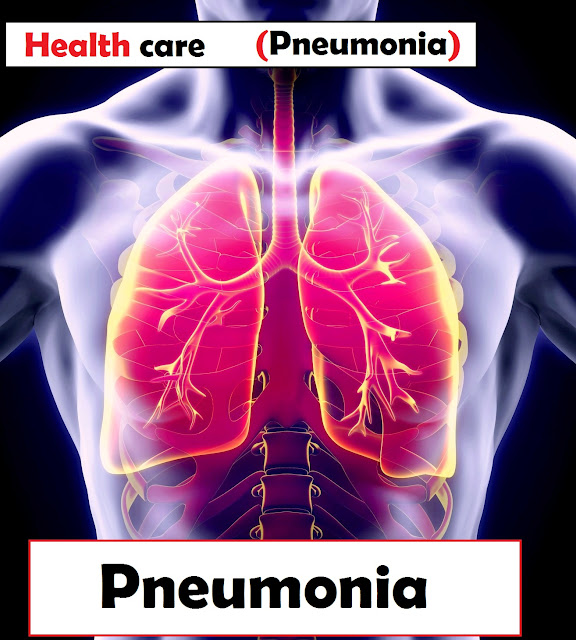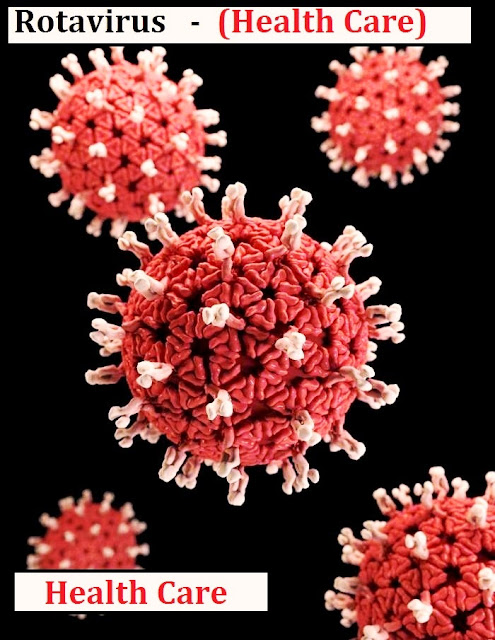Pneumonia
A bacterial, viral, or fungal infection can cause pneumonia, which involves lung fluid and inflammation. It makes breathing difficult and can result in a fever, a cough with yellow, green, or red mucus, and other symptoms. The most typical causes of pneumonia include the flu, COVID-19, and pneumococcal illness. The aetiology and severity of pneumonia affect the course of treatment.
Describe
pneumonia.
A lung illness known as pneumonia is brought on by bacteria, viruses, or fungi. Pneumonia can result in fluid or pus in your lungs as well as swelling of your lung tissue (inflammation). Viral pneumonia often goes away on its own, but bacterial pneumonia typically becomes worse before getting better.
One or both lungs may be affected by pneumonia. Bilateral or double pneumonia is the medical term for pneumonia affecting both lungs.
What makes
viral pneumonia different from bacterial pneumonia?
Despite the fact that all pneumonia is an inflammation brought on by a lung infection, the symptoms might vary depending on whether a virus, bacterium, or fungus is to blame.
Compared to viral pneumonia, bacterial pneumonia is often more prevalent and more severe. The likelihood of needing a hospital admission is higher. Providers use antibiotics to treat bacterial pneumonia. Symptoms of viral pneumonia resemble those of the flu and are more likely to go away on their own. Viral pneumonia often doesn't require any special care.
What varieties of pneumonia exist?
We classify pneumonia
according to the organism that caused it (virus, bacteria, or fungus) and how
you contracted it (community-acquired, hospital-acquired, or
ventilator-associated pneumonia).
pneumonia developed in the community (CAP)
Community-acquired pneumonia is a kind of pneumonia that develops outside of a medical setting. Among the causes are:
Bacterium:
The most frequent cause of CAP is an infection with the Streptococcus
pneumoniae bacteria, often known as pneumococcal illness. Meningitis, sinus
infections, and ear infections can all be brought on by pneumococcal illness.
Atypical pneumonia, which often has milder symptoms, is brought on by the
bacterium Mycoplasma pneumoniae. Haemophilus influenza, Chlamydia pneumoniae,
and Legionella (which causes Legionnaires' disease) are other bacteria that
cause CAP.
Viruses:
Pneumonia can occasionally be brought on by the same viruses that cause the
common cold, the flu (influenza), COVID-19,
and respiratory syncytial virus (RSV).
Fungi
(moulds): Fungi are infrequent causes of pneumonia, including
Cryptococcus, Pneumocystis jirovecii, and Coccidioides. The danger of
contracting pneumonia from a fungus is greatest for those with weakened immune
systems.
Protozoa:
Toxoplasma and other protozoa seldom cause pneumonia.
Pneumonia developed at a hospital (HAP)
While receiving treatment for another sickness or
operation at a hospital or healthcare
facility, you might get hospital-acquired pneumonia (HAP). Since HAP is
frequently brought on by bacteria that are resistant to antibiotics, such as
methicillin-resistant Staphylococcus aureus, it is typically more dangerous
than community-acquired pneumonia (MRSA). So, HAP can make you sicker and be
more challenging to cure.
hospital-acquired pneumonia (HCAP)
HCAP
can be acquired in outpatient or extended-stay clinics or when receiving
long-term care in an institution (like a nursing home). It's typically brought
on by germs resistant to antibiotics, just as hospital-acquired pneumonia is.
Pneumonia brought on by a ventilator (VAP)
You
run the risk of developing ventilator-associated pneumonia (VAP) if you require
a respirator or other breathing aid while receiving medical treatment (often in
the intensive care unit). VAP is brought on by the same germs that cause
hospital-acquired pneumonia as well as community-acquired pneumonia-causing
bacteria.
pneumonia from aspiration
When
solid food, liquids, saliva, or vomit enters your lungs through your trachea
(windpipe), it is known as aspiration. Your lungs might become infected if you
are unable to cough these out.
How can I distinguish between pneumonia and the flu or a typical
cold?
Only
a doctor can diagnose you since it can be hard to distinguish between the
symptoms of a cold, the flu, and pneumonia. It's crucial to get medical
assistance if you experience any severe symptoms that can indicate pneumonia,
including:
- chest pain or congestion
- trouble breathing
- 102 degrees Fahrenheit (38.88 degrees Celsius) or greater is considered a fever.
- coughing up spit or mucus that is yellow, green, or red.
Who is most vulnerable to developing pneumonia?
Pneumonia is more likely to affect you if you:
- either have a minimum age of 2 or are older than 65.
- are coping with a heart or lung ailment. Cystic fibrosis, for instance,
- pulmonary fibrosis, sarcoidosis, emphysema, asthma, and chronic obstructive lung disease.
- are unable to swallow due to a neurological issue they are coping with.
- Aspiration pneumonia is more likely to occur if you have conditions like dementia, Parkinson's disease, or a stroke.
- are either hospitalised or receiving long-term care.
- Smoke.
possess a compromised immune system. If you are undergoing chemotherapy,
receiving an organ transplant, have HIV/AIDS, or are on immune-suppressing
medicines, you may have a compromised immune system.
How widespread is pneumonia?
Pneumonia
may affect anyone. Millions of Americans are diagnosed with it each year,
making it a widespread disease. In the US, pneumonia claims the lives of about
55,000 people annually. It is the leading cause of mortality in underdeveloped
nations.
Significance and Causes
What pneumonia symptoms and indicators are there?
The aetiology of pneumonia affects the symptoms. Mild to severe symptoms are
possible. Infants, young children, and elderly people may exhibit various
symptoms.
Pneumonia caused by bacterial symptoms
Bacterial pneumonia symptoms may appear gradually or unexpectedly. These signs
include:
- extreme fever (up to 105 F or 40.55 C).
- cough up green, yellow, or red mucous.
- Tiredness (fatigue) (fatigue)
- quick breathing
- respiration difficulty.
- quick heartbeat.
- Chills or perspiration
- stomach or chest pain, especially while coughing or taking big breaths.
- decrease in appetite.
- bluish lips, nails, or skin (cyanosis).
- confusion or a changed state of mind.
Virus-induced pneumonia symptoms
Viral pneumonia symptoms often appear over a few
days. You could also have the following conditions in addition to symptoms
comparable to bacterial pneumonia:
- I coughed dry.
- Headache.
- muscular pain
- extreme fatigue or sluggishness.
Pneumonia signs in young children
Pneumonia symptoms in infants and new-borns might
differ from those in adults, or they may not manifest at all, including:
- Fever, chills, an overall unease, and flushed or perspiring skin
- Cough.
- breathing difficulty or fast breathing (tachypnea).
- decrease in appetite.
- Vomiting.
- lacking in energy
- agitation or restlessness.
What brings on pneumonia?
When an infection in the tiny sacs of your lung is
attacked by your immune system, pneumonia can result (alveoli). Your lungs will
enlarge and begin to leak as a result.
Pneumonia-causing illnesses can be brought on by a wide variety of bacteria,
viruses, and fungi. In adults, bacteria are the most frequent cause, but
viruses are the most frequent cause in school-aged children. Typical ailments
that might result in pneumonia include:
- typical cold (rhinovirus).
- COVID-19 (SARS-COV-2) (SARS-COV-2).
- a flu (influenza virus).
- Metapneumovirus in humans (HMPV)
- Parainfluenza virus in humans (HPIV)
- The illness of legionnaires
- bacterium called Mycoplasma pneumonia.
- a pneumococcal infection.
- Pneumocystis pneumonia
- Syncytial respiratory virus (RSV)
Just how is pneumonia
identified?
A doctor will inquire about your medical history and do a physical check to determine whether you have pneumonia. A stethoscope will be used to listen to your lungs, and they may perform or prescribe more testing. These consist of blood tests, sputum (spit) tests, pulse oximetry (testing the oxygen levels in your blood), imaging (such as chest X-rays), and imaging.
Even if your doctor can definitively say you have pneumonia, they might not always be able to pinpoint the specific reason.
Can pneumonia
get better by itself?
Although viral pneumonia frequently resolves on its own, you should always abide by your healthcare provider's instructions to treat the symptoms and lower your chance of developing life-threatening consequences.





